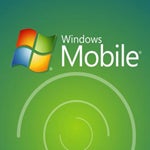Let's say you're not convinced that the Apple iPhone or a Google Android OS-based device is appropriate for your business or as an enterprise app platform. You believeMicrosoft isn't yet roadkill in the mobile world, so you decide to bet on the new Windows mobile OS. Which one do you choose?
Get the best iPhone and iPad apps for pros with InfoWorld's business iPhone apps finder. | Keep up on key mobile developments and insights with theMobile Edge blog and Mobilize newsletter. ]
 It turns out that Microsoft has four "Windows" mobile options, none of which is compatible with the others. Apple and Google both have or are working on unified mobile operating systems -- iPhone OS (renamed "iOS" yesterday by Apple) and Android OS, respectively -- meant to run on smartphones, slates, and other mobile Internet devices (MIDs). But Microsoft has decided that a one-size-fits-all approach is a bad idea, as different devices are, well, different.
It turns out that Microsoft has four "Windows" mobile options, none of which is compatible with the others. Apple and Google both have or are working on unified mobile operating systems -- iPhone OS (renamed "iOS" yesterday by Apple) and Android OS, respectively -- meant to run on smartphones, slates, and other mobile Internet devices (MIDs). But Microsoft has decided that a one-size-fits-all approach is a bad idea, as different devices are, well, different.Last week, Microsoft announced the beta availability for the fourth of these mobile "Windows" OSes: Windows Embedded Compact 7. Does this four-way mobile strategy make sense? I'm not sure, but it helps to understand what each of the "Windows" mobile OSes actually is. (By the way, I use the quotation marks because only one is derived from the desktop Windows OS; the others use what a Microsoft spokesman calls "broad Windows technology.")
Windows 7 for Slates
Several of the iPad wannabes recently announced, such as the one due from Asustek in early 2011, use the same Windows 7 you'd find on a desktop or laptop PC. The idea is that a Windows 7 slate is simply a PC in the slate form -- no different than the many tablet PCs over the last decade that ran Windows XP or Vista, depending on their era. Such devices run Windows and all its apps, as well as any compatible hardware devices, providing users the maximum capability, says David Wurster, senior product manager for Windows Embedded.
Unlike XP and Vista, Windows 7 doesn't require a special "pen and tablet" edition of Windows; the regular Windows 7 includes the libraries that let both pen devices and touch-based gestures work. Unfortunately, my testing of Windows 7 on touchscreen PCs left me cold. The number of gestures supported is small, and most applications aren't designed for finger-based touch input. Simply put, running Windows and Windows apps via touch is a painful experience, no matter how great the tablet hardware itself may be.
Microsoft had made a lot of noise in 2007 about its Surface technology that was supposed to revolutionize touch input and make slate tablets the next big thing, but Microsoft quietly let the technology drop in late 2008, and Windows 7 ships with the remnants of the Surface dream. Microsoft declined to discuss its touch technology last September when Hewlett-Packard began aggressively marketing its touchscreen PCs, with its PR firm referring me to company blogs that hadn't been updated in nearly a year and that noted further development on the touch UI was unlikely.

No response to “How to Make Sense of Microsoft's Multiple Mobile Operating Systems”
Leave a Reply